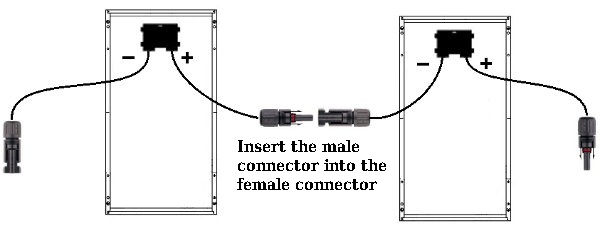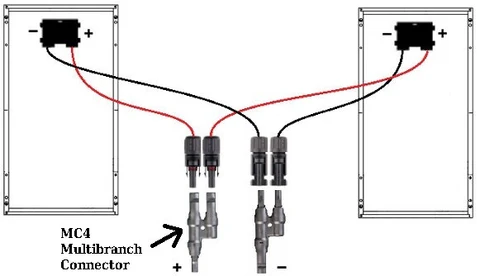Solar energy systems are evolving rapidly, with modern solutions focusing on simplicity, efficiency, and durability. Among the essential components of solar installations are MC-4 connectors and solar extension cables, which have replaced older, more labor-intensive wiring methods. This article explores their functionality, usage, and benefits in detail, ensuring you can optimize your solar setup.
1. What Are MC-4 Connectors and Why Are They Important?
MC-4 connectors are the standard in modern solar systems, used for linking solar panels to create reliable electrical connections. These connectors come in male and female types and are designed to snap together securely, making installation straightforward.
Key Features of MC-4 Connectors:
- Locking Mechanism: Prevents accidental disconnection, making them ideal for outdoor use.
- Certifications: Meets National Electrical Code requirements and is TÜV-certified.
- Durability: Weather-resistant design ensures long-term performance.
Image Suggestion: A close-up shot of male and female MC-4 connectors, showcasing their locking design.
2. Series and Parallel Connections Using MC-4 Connectors
Proper wiring is critical for achieving the desired power output from your solar array. MC-4 connectors simplify this process, whether you’re wiring panels in series or parallel.
a) Series Connections
In a series connection, the positive terminal of one panel connects to the negative terminal of another. This increases the voltage while keeping the current constant.
- Example: Two solar panels rated at 18V and 8A will yield 36V and 8A when connected in series.
- Steps:
- Identify the positive and negative leads on each panel.
- Snap the male MC-4 connector into the female MC-4 connector.
b) Parallel Connections
In parallel connections, positive terminals connect to positive, and negative to negative. This increases current while keeping the voltage constant.
- Example: Two 18V, 8A panels will result in 18V and 16A when connected in parallel.
- Additional Tools: For small systems, use MC-4 multi-branch connectors. For larger setups, a PV combiner box is required.
3. What Are Solar Extension Cables?
Solar extension cables allow flexibility in connecting solar panels to other components, such as charge controllers or inverters. These cables are similar to electrical extension cords, with a male connector on one end and a female connector on the other.
Choosing the Right Cable Length:
- Measure the total distance between your solar array and electrical equipment.
- Select a cable long enough to cover the distance with some slack.
- Avoid cutting cables unless necessary; if cutting, ensure the ends are prepared for reconnection or termination.
Practical Applications:
- For RVs or boats: Directly connect panels to the equipment using extension cables.
- For homes or cottages: Use extension cables to connect panels to a combiner box, then switch to cheaper wiring like THHN for long runs.
4. Using Extension Cables Effectively
When using solar extension cables, proper planning and installation are crucial.
Step-by-Step Guide:
- Measure Distance: Ensure the total length of cable is adequate for the connection.
- Cutting Cables: If cutting is necessary, split the cable at appropriate lengths to suit the layout.
- Terminating Ends: For combiner boxes, strip the cable ends and terminate them at bus bars or circuit breakers.
5. Disconnecting MC-4 Connectors
To disconnect MC-4 connectors, you’ll need a spanner wrench tool, which is designed to unlock the connectors without damaging them.
Steps:
- Insert the tool’s extension posts into the grooves on the female connector.
- Gently twist to release the locking mechanism.
- Separate the male and female connectors.
This tool is also handy for installing new connectors.
6. Benefits of Modern Solar Wiring Solutions
The shift to MC-4 connectors and solar extension cables offers several advantages:
- Ease of Installation: Plug-and-play design reduces labor time.
- Reliability: Secure locking mechanisms and weather-resistant materials ensure durability.
- Flexibility: Extension cables allow for adaptable system designs.
- Cost Savings: Cheaper alternative wiring (e.g., THHN) can be used for long distances.
7. Conclusion
MC-4 connectors and solar extension cables are indispensable in modern solar installations. They simplify wiring, enhance reliability, and ensure compliance with safety standards. By understanding their applications and best practices, you can optimize your solar energy system for long-term performance.
Call to Action: If you have any questions or need assistance, contact the Winpower Cable team for expert advice.
Post time: Nov-29-2024


